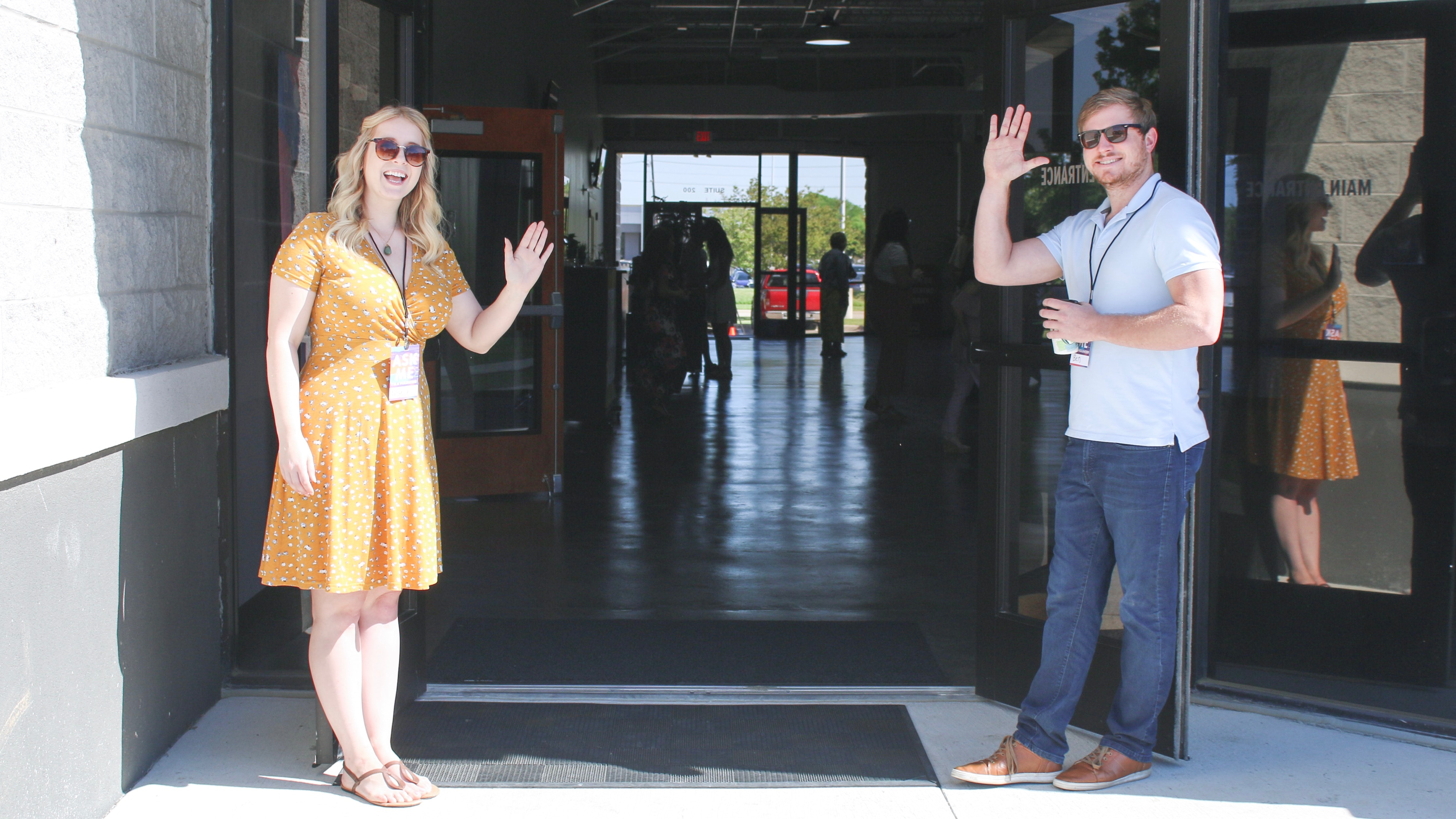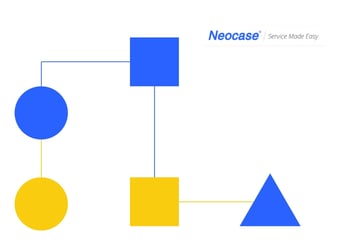Enterprise employee onboarding faces an inherent challenge that small and medium businesses don’t.
Overcoming that challenge is crucial to securing ROI from your onboarding program and unlocking more value from your workforce.
Here’s how.
 Here’s the problem with enterprise employee onboarding.
Here’s the problem with enterprise employee onboarding.
Employee onboarding is the process of delivering all the tools, knowledge and support new hires need to be successful. It’s the conveyor belt that turns a great candidate into a great employee.
Seems simple enough. But unpack it a little, and the problem’s clear.
You hire hundreds, maybe thousands of people every year. Those people all join different teams, at different levels, with different working arrangements. Maybe in different offices, in different time zones.
They all use different systems and tools, and need different permissions to access the systems and tools everyone uses.
That’s the problem.
That’s hundreds, maybe thousands of people every year who need different tools, knowledge and support from different offices, departments and people across your business.
Just to get started doing what you hired them for.
Take Marcus.
Marcus is a new marketing executive relocating from London to Paris to join your business. His onboarding needs are complex and nuanced. Like, relocation advice. And your company handbook and policies (in English not French).
He mightn’t be familiar with your CRM so needs training. He’s familiar with LinkedIn, of course, but perhaps needs a primer on cultural communication differences.
Plus Marcus will work from home on Fridays, so he’ll need the right remote working tools. And the security training to safeguard against breaches through his dodgy home broadband.
And he’s never worked in France. He needs support that your French marketing executive didn’t need, just to feel confident navigating your office.
Then he has personalised training and development needs. Onboarding should last around three months and even then, the conveyor belt doesn’t come to a dead stop. It transitions from candidate to new hire to established employee, subject to your normal people processes.
It goes on and on. And you don’t just have Marcus. You have hundreds, even thousands of Marcuses.
That’s why enterprise employee onboarding is difficult.
Because you’re dealing with extreme complexity. Onboarding sits with HR but it crosses every department and demands input from across the business.
Often, that complexity creates a bad onboarding experience for everyone.
For new hires.
New hires face constant friction. Emails get lost, information doesn’t get passed on, and they answer the same question fifty-thousand times. They complete forms, resend forms, recomplete forms then lose patience altogether.
And often, they don’t get the right information anyway. Which means they start feeling disgruntled, disengaged and underprepared.
Which long-term, threatens engagement and productivity. Plus, up to 20% of turnover happens in the first 45-days. So a poor onboarding experience can see retention plummet and recruitment costs skyrocket.
And for HR.
HR faces a mammoth task. For each new employee, you handle hundreds of tasks. Seemingly small things like sorting IT logins or alerting the cafeteria about a nut allergy become arduous, frustrating back-and-forths.
Every form needs sending, chasing, checking, forwarding, filing. Every question from every new hire adds up.
Smaller businesses have the HR capacity to handle this stuff. But in larger organisations, onboarding becomes a time-consuming, error-prone, frustrating process. One that involves so many people and systems, you tend to lose control.
It’s the big reason employee onboarding programs struggle, because you have to expend so much energy getting other people across the business on the right page. You spend your days firefighting, not delivering real value.
And for shareholders.
Onboarding is business-critical. Studies consistently show onboarding is linked to better business outcomes, like increased efficiency and higher performance.
And in today’s fast-paced, always-innovating world, businesses can’t afford not to harness their workforce effectively. Onboarding is a powerful initiative that drives growth and competitiveness. Getting this stuff right matters.
What’s the solution?
In short, technology. But there’s more to it than that.
Many onboarding technologies aren’t fit-for-purpose at scale, because they can’t cope with the complexity inherent in enterprise onboarding.

What’s needed is technology that can spread across the business, uniting all your disparate people and systems. Technology that joins the dots, mapping a seamless onboarding pathway between all those distinct points.
There are loads of onboarding platforms out there but at enterprise scale, this ability to handle complexity is the most important distinguishing feature.
You need an onboarding platform – or rather, Neocase is an HR platform that also handles onboarding – that integrates seamlessly with the systems you already use.
Even better, you need an onboarding platform that integrates with the systems everyone uses. That is, a platform that integrates not just with your HCM, job board, ATS and e-learning systems but also with payroll, communications tools, ERP software, BI platforms and anything else relevant.
That’s how you create a seamless onboarding experience that’s better for everyone.
For new hires.
You configure onboarding processes to suit every new hire (using Neocase’s easy no-code process builder) and new employees simply glide along the conveyor belt.
Marcus logs into a single, slick portal anytime, anywhere, from any device. He gets alerts to complete forms, check his payroll info, finish training, and so on. He can browse his employee records from one place. If he starts managing a team, he can see his team’s relevant info too, like performance stats and sickness records.
If Marcus has a problem, the chatbot answers it – or escalates to someone who can. And if he has a question, he checks the personalised knowledge hub which is pre-configured to only show him what he needs. Or what he might need, before he needs it, using AI.
(That’s next-generation employee experience, and that’s how Neocase customers have seen 80% to 85% Tier Zero Resolution)
And for HR.
Neocase makes employee onboarding easy.
To organise systems log-ins, say, you don’t need to message IT. You pre-build the process so IT gets an automatic alert to sort logins at the right time. And an automatic reminder. And if there’s an issue, it’s automatically escalates to the right person.
So you don’t play piggy in the middle unless you’re needed. It slashes the time you waste on admin and chasing.
(Our customers typically see around a 40% increase in HR productivity in under a year, for context.)
And for shareholders.
Using Neocase to optimise HR – including onboarding but far beyond too – boosts productivity and slashes operational costs.
It empowers HR delivery, which means it empowers the workforce – giving every employee the tools, knowledge and support to be successful. From their first day onwards.
Enterprise onboarding is only as good as the technology driving it
Building a successful onboarding program is difficult because enterprises are inherently complex. But even at enterprise level, onboarding only drives maximum ROI when it feels simple and seamless.
The right technology crosses that gap, integrating across the business to build a unified path between the departments, systems and people onboarding involves.
Neocase HR is a flexible, scalable HR solution that’s designed for HR, built by HR and run by HR. Onboarding is just one of the HR processes we can effortlessly support.
Book your one-to-one demo now to see how Neocase could make your onboarding easier and more effective: BOOK HERE.

 Microsoft Teams
Microsoft Teams
 Workday
Workday
